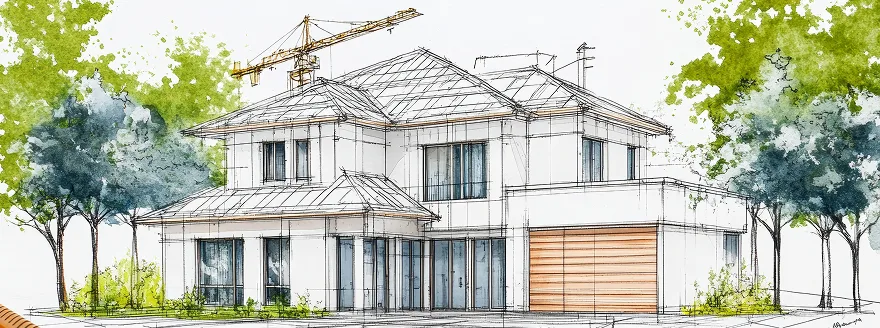Your roof is your home’s first line of defense and one of its biggest investments. But how long does a roof really last? Whether you’re planning a new build, buying an older home, or budgeting for future renovations, understanding roof lifespan and the replacement roof timeline is key.
In this guide, we’ll break down:
● Lifespans by roofing material
● Factors that impact roof longevity
● Tips to extend your roof’s life
● When it’s time to replace your roof
Let’s get into it.
Factors That Impact Roof Longevity
Even with a strong material, roofing material longevity depends on several variables:
1. Climate Conditions
● Extreme heat can warp shingles or fade coatings.
● Snow and ice cause expansion, contraction, and ice damming.
● High winds or hurricanes can lift or tear roofing materials.
● Salt air near coasts corrodes metal faster.
2. Roof Ventilation
Proper airflow prevents heat and moisture buildup, two leading causes of early roof failure.
3. Installation Quality
A poorly installed roof may fail in under 10 years, even with quality materials. Choose certified, experienced contractors.
4. Ongoing Maintenance
A roof that’s inspected and maintained yearly will likely outlast one that’s ignored.
Replace Roof Timeline: When Should You Re-Roof?
Here are clear signs that it’s time to replace your roof:
● Cracked, curled, or missing shingles
● Frequent leaks or water stains on ceilings
● Sagging roofline
● Excessive moss or algae growth
● Roof is 20+ years old (for asphalt shingles)
If you’re unsure, get a professional roof inspection—especially after major storms or if your neighbors are re-roofing (homes in the same development often age together).
How to Extend Your Roof’s Life
To increase roofing material longevity:
● Schedule annual inspections (especially after storms)
● Clean gutters regularly to prevent water backup
● Remove debris, moss, or mold with non-abrasive cleaners
● Trim nearby tree branches that could cause damage
● Fix minor issues (like a loose shingle or flashing) quickly Bonus Tip: Keep a roof maintenance log to track repairs and inspections. This can be helpful during home sales or insurance claims.
Eco-Friendly Considerations
Many modern roofing materials offer sustainability benefits:
● Metal roofs are recyclable and reflect heat.
● Slate and tile roofs reduce the need for replacements over generations.
● Cool roofing systems reduce your home’s heat absorption and utility bills.
Opting for a longer-lasting roof also reduces your environmental impact over time.
Download our checklist here
FAQs About Roof Lifespan
How long does a roof last on average?
Most roofs last 20 to 50 years, depending on the material and maintenance. Some premium roofs, like slate or tile, can last up to 150 years.
What type of roof lasts the longest?
Slate roofs have the longest lifespan up to 150 years. Clay tile and metal roofs are also highly durable.
Can a roof last 100 years?
Yes. With proper installation and care, slate and tile roofs can exceed the 100-year mark.
What is the best roofing material for longevity?
For optimal roofing material longevity, go with metal, tile, or slate especially in climates with extreme weather.

Final Thoughts: What You Should Remember
● The roof lifespan depends heavily on material, installation, weather, and upkeep.
● Most homeowners will need to replace a roof at least once in their lifetime.
● A longer-lasting material may cost more upfront, but it often saves more in the long run.
● Maintenance is your best tool for preserving any roof’s health.If you’re asking yourself, “How long does a roof last?”, it might also be the right time to get a free inspection or quote.
Want to Learn More?
Need help choosing the right roofing material? Or looking to compare contractors? Get a free inspection and quote. Call us at 801-457-7214


